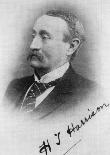Advertised as a 'New, Grand, Great, Gorgeous, Glittering, Glorious Xmas Annual, illustrating ... the most popular of Eastern Legends, with unprecedented regard for strict accuracy of Oriental manners and customs' (Sydney Morning Herald 26 December 1891, p.2), the exact authorship of the pantomime remains somewhat unclear, although director Frank Emery no doubt had a hand in the final version. The production, which also introduced Fred Mason and Rose Dearing to Australian audiences, contained a cast of special overseas artists, including the Wonderful Craggs (acrobats), the Almonte Troupe (who performed the Harlequinade), The Fairy Four, and Amanda Noel.
The story is told in three acts and proceeds through the following scenes:
Act 1: Scene 1 The Mushroom Glade;
Scene 2 Mount Olympus;
Scene 3 Ali Baba's 'Umble 'Ome;
Scene 4 The Grand Bazaar of Bagdad.
Act 2: Scene 1 Through the Wood, Across the Lake, Up the Hill;
Scene 2 Secret Entrance to the Banyon Forest;
Scene 3 The Robber's Cave.
Act 3: Scene 1 Cassim Baba's House;
Scene 2 Grand Terrace and Entrance to Palace, Bridal Procession, and Joyous Revels;
Scene 3 A Corridor in the Palace; Grand Finale
(Transformation Scene; The Elements: Earth, Air, Fire, Water; Triumph of Spring; and Harlequinade).
The score is described in advertising as having been 'largely derived from ancient oriental sources, with modern music hall melodies... [with original music] composed and arranged by Messrs. Alfred Plumpton and H. T. Harrison' (Sydney Morning Herald 26 December 1891, p.2).
Songs incorporated into the narrative include 'A Hard Day's Work' (sung by Harry Shine), 'He was Whistling this Tune all Day and all Night' (sung by Rose Dearing), 'Knocked 'Em in the Old Kent Road' (a coster song sung by Fred Mason), 'The Fat Boy's Song' (sung by chorus), 'The Rather Girl' (Pattie Browne), 'A Villain I Live and Die' (John Gourlay), 'I Don't Think it's Ever Been Done' (a topical duet sung by Fred Mason and Harry Shine), and the vivacious finale 'Stand by your Guns' (company).

